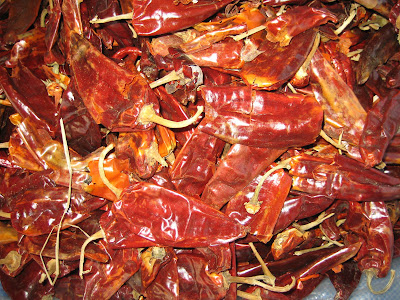






A blog to keep you updated with some of my recipes and foodie experiences from SE Asia.































If you are unsure of what these products are or look like, check out Thai Food Online, which has a comprehensive guide to ingredients that you can also by, or ImportFood.com, which does good recipes as well as being an online supermarket.
Don't forget you will also need a good wok, and a lot of chopsticks!


 .
.














Chicken plucked and ready to go. Vietnamese eat all parts of the bird, including the head and feet.

Vietnamese and Western bananas – slight size difference!

Pig trotters; a staple of any Vietnamese pregnant woman – apparently they help to produce good quality breast milk.

A bit of beef filleting going on – it is very common to see meat left out in the open air throughout the markets. I asked Anh, our chef, why it wasn’t refridgerated and she told me that every morning it was brought from locals who had dissected the meat earlier that morning, and therefore it didn’t need to be put on ice or refridgerated.

Huge beef loin!

Pig intestines.

Pig hearts and a few livers in the top left corner.

Caged birds, not sure what sort, but I got the impression it wasn't for pets.

A huge selection of different types of rice, beans and lentils.

Massive bucket of snails, not something I'll be dipping into!

Close up.

Selection of fresh fish Catfish – this is the same fish we used for our Steamed Catfish in Lotus Leaf and Tamarind Sauce recipe.

Not sure of name of these fish, however I thought it was a shame they did not have room to swim about, even if they weren’t going to be around much longer!

Chickens to be sold as pets for laying eggs.
So as you can see, the food of Hanoi reaches far and wide, and these were just a few selection shots from our tour. I noticed that duck eggs were as common as chicken eggs, and also bird eggs (quite small) were available easily. If only I had a kitchen and a Vietnamese translator!